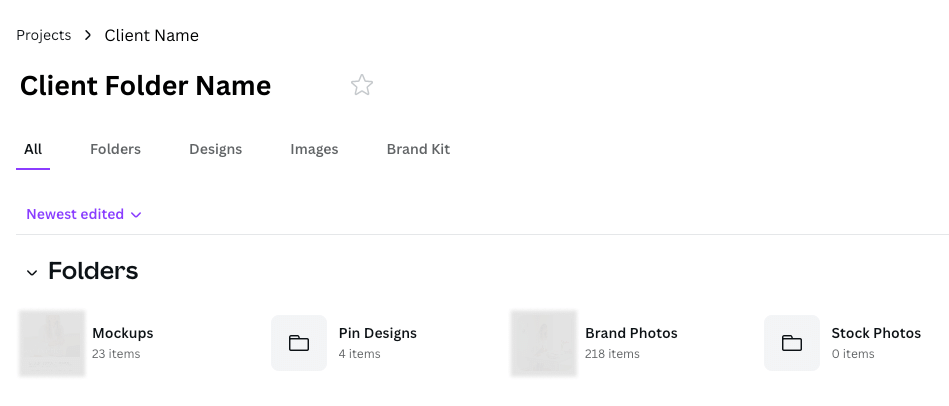It took a long time for me to realize that I’ll never be That Girl™. I can dream about perfectly aesthetic Sunday resets and organized Notion content planning systems all I want, but we have cardboard boxes over every outlet as cat-proofing and all of my content ideas live inside a chaotic list in my phone Notes app.
That’s what works for me. And once I realized that my marketing was kinda messy and it still worked for me? It blew the world of possibilities wide open.
I could stop trying to force myself into some other “expert’s” version of what I “should” be doing to market my business and instead actually just do the dang thing.
If you’re unintentionally getting in the way of your own marketing, this post is for you, because today I’m sharing my favorite ways to simplify your marketing process by reducing the friction.
How to Reduce Friction in Your Marketing
There is a lot of content out there about the right way to market your business and how to create a marketing strategy. Drill down into specifics and you get a hundred and one ways to market your business on Pinterest or craft the perfect launch sequence.
But the truth of the matter is that the worst thing you could do when marketing your business is to do nothing at all. Something is (almost) always better than nothing.
So if you’re getting caught up in the cycle of trying to do all the right things and follow all the best advice, it’s time to take a step back and look at where the stumbling blocks really are.
Where is there friction in executing your marketing plan?
For me, it was in needing to have the plan itself. It just wasn’t happening. The more I tried to force myself to create and stick to a plan, the worse I felt about the content I created and the harder it was to create.
In this post, I’m sharing the best advice I’ve learned about marketing as a solopreneur and how you can find manageable ways to market your business with less friction.
Give Yourself Permission to Half-Ass Something
One of the first things I learned in therapy (and I promise we’ll get back to marketing) was about cognitive distortions. One of the most common cognitive distortions is all-or-nothing thinking.
Where this might come to play in your business is that you might think you have to do it all – and do it all right – or you shouldn’t bother doing it in the first place.
Nope.
Whether it’s your Instagram engagement or keyword research, it’s okay if you need to half-ass it sometimes. Especially if it means it’s freeing up time and brain power to work on something even more important.
Post in the Moment or Schedule it Out
Everyone loves to sell the dream of having a month’s worth of content created and scheduled out. Heck, it’s one of the solid selling points of Pinterest, too!
But it’s more than okay to write your caption the day you post it. That’s honestly what I do 90% of the time.
On the flip side, if you’re stressing out about being online at the perfect time, use the scheduling tools as they’re intended. Schedule your content, let it go out, and breathe.
When it comes to third-party schedulers, I’ll always recommend Tailwind for Pinterest, but use whatever you like. Many platforms offer in-app scheduling, and you can even schedule straight from Canva now!
If you have a tool you already use and like, keep using it!
Make it Easier to Do the Thing than to Not
You created a system. You love your system. But do you use your system?
I love a good content organization tool. Notion, ClickUp, Airtable, you name it.
But when an idea strikes me in the moment as I’m brushing my teeth, am I really going to go to my office, open up Airtable, type it up, and assign myself a task in ClickUp to complete it?
No way. Instead, I open up my phone Notes app, type whatever random idea I had, close the app, and continue on with my day.
Here’s another example. If you want to capture more b-roll footage to use for social media, get a tripod and keep it set up near where you work. You’ll see the tripod and be more likely to film something because it’s already set up.
Organize Your Content Creation Assets
You know how all the productivity influencers tell you to set out your workout clothes the night before so you actually go to the gym in the morning? I hate to break it to you, but there’s something to that.
When things are easy to find, they’re easy to use. And making things easy, as you just learned, is essential to getting things done, period.
Having your stock photos and brand photos organized in neat little Canva folders makes creating so much easier it’s not even funny.
Like, seriously, if you do one thing for your business this week, month, quarter, or year, let it be organizing your Canva. Please.
Here’s an example of how I set up my clients’ folders in Canva:
- Pin Designs
- Brand Photos
- Stock Photos
- Mockups (with individual subfolders for each product or lead magnet)
- Portfolio (with individual subfolders for each project)

Invest in Templates (or create your own)
Working from a template is almost always better than starting from scratch, but it doesn’t always make sense to purchase someone else’s template.
Especially when we’re talking about things like workflows and project management systems, every business is going to be so unique and individual that a template might not be the right fit.
I’ve purchased several ClickUp templates, but 9 times out of 10, I end up building mine from scratch. And then I save them as a template.
Build once, then repeat.
Even if you do buy templates (like the ones in my Pinterest Toolkit), I recommend creating a copy, editing them for your brand and specific use, and then using that new design as your template going forward.
Don’t Be Afraid to Throw Out the Plan
Having a plan for your marketing and content creation can be massively helpful, but don’t let it be something that keeps you from creating. You don’t have to wait to post if you haven’t created a plan, and you can throw out the plan if you need to.
Life happens, sometimes your brain won’t cooperate, and sometimes you get a strike of inspiration that doesn’t fit in your perfectly regimented marketing plan.
Lean into it. I’ll always be a big proponent of going with the flow, even if it takes me a little off course.
When in Doubt, Be More You
The most important part of any business owner’s marketing strategy isn’t how frequently you post or your content pillars — it’s you. You are the secret sauce, the differentiator, the thing that draws people in and keeps them there.
I hate to break it to you, but there are lots of other people who can do what you do and who are sharing the same tips as you. But how you share them, how you talk about your services, and the unique qualities you bring to every interaction is what sets you apart.
Plus, if the content you’re creating doesn’t ring true to who you are, your audience will be able to tell, and they won’t vibe with it as much either.
Be you, and the rest will fall in line.
Marketing your business doesn’t have to be hard
Sometimes, the rules we put in place for ourselves about what marketing should look like or how we should be creating content actually just get in the way.
It’s way too easy to get caught up in the “rules” of every platform, which is one of the reasons I love Pinterest so much. Pinterest encourages repurposing content, doesn’t ask you to engage or even be online constantly, and works in the background of your business 24/7.
It’s the ultimate “lazy” marketing platform, once you’ve got it up and running.
If you’re looking for ways to make Pinterest marketing even easier, check out the Pinterest Toolkit for Online Service Providers.
Inside the kit, you’ll find resources for every step of your Pinterest journey, including a keyword bank, pin templates, content ideas, and tracking templates.
I’ve done the heavy lifting for you, drawing on years of working with service-based businesses, so now all you have to do is take the tools and implement them!
And if any of the tips in this post resonated with you, or you have some of your own you’d like to share, I’d love to hear it! Send me an email or DM me on Instagram!
